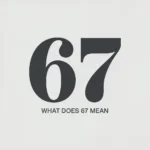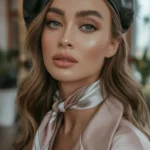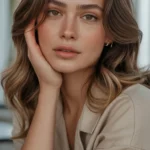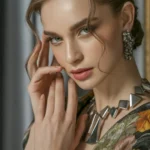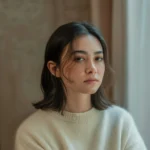If you’ve been vibing with online aesthetics, scrolling through TikTok edits, or diving into the surreal worlds of digital art, you may have seen people mention the term 🚀what does chromakopia mean🚀. It’s one of those words that sounds mystical, artsy, and a little chaotic—exactly the type of term Gen-Z loves to adopt and remix.
Even though it feels like a brand-new internet term, its roots run deeper than a random aesthetic label. The word has a story, a vibe, and a growing cultural meaning shaped by music, imagery, color theory, and online creative expression.
This guide breaks everything down in the simplest, clearest, and trendiest way possible—so you can understand exactly what the word conveys, how people use it, and how you can use it correctly too.
Let’s dive in. 🎨✨
⚡ QUICK ANSWER
Chromakopia is a creative, artistic expression often associated with intense visuals, dreamlike color palettes, surreal experiences, emotional overwhelm, and psychedelic aesthetics. The term is widely connected to artistic themes where color, memory, and emotion merge to create a feeling of altered perception or hyper-saturated reality.
In simple terms:
👉 It’s a vibe, a feeling, and an aesthetic all in one.
👉 People use it to describe colorful chaos, dreamlike scenes, or emotional intensity.
💫 Where the Term Comes From (The Cultural Origin Story)
Chromakopia didn’t just fall from the sky. It rose to popularity thanks to its use in creative media—particularly music and visual art. The term itself sounds like a blend of chroma (color) + -kopia (a stylistic suffix giving a surreal or dreamlike tone).
It feels futuristic.
Artistic.
Emotionally loaded.
Because of this, creative communities on platforms like:
- TikTok
- Tumblr
- Aesthetic blogs
- Fan edits
- Visual art communities
…naturally adopted the term to express dreamlike, colorful storytelling.
Over time, it evolved from a reference inside the creative community to a broader term describing intense color-based emotions, distorted reality, or vivid imagination.
🎨 What Chromakopia Feels Like (The Emotional Interpretation)
Instead of treating it like a dictionary definition, it’s better to understand the feeling behind it.
Chromakopia is often used to express:
- Overwhelming emotions (colors used as metaphors)
- Visually chaotic scenes (like neon dreams or glitch-style edits)
- Memories that feel too saturated to be real
- A dreamlike world full of color and distortion
- A mental or emotional state that feels surreal
People often associate it with:
- Nostalgia that hits too hard
- Psychedelic aesthetics
- Emotional waves
- Therapeutic expression inside art
- Colorful digital experiences
- Escapism through visuals
It’s not a literal “condition” or a medical term—it’s an aesthetic and emotional language.
🌈 The Visual Aesthetic Behind Chromakopia
If you were to scroll through a moodboard titled Chromakopia, you’d probably see:
- Neon blues and deep scarlets
- Faded pastels blending with electric hues
- Distorted shadows
- Blurry silhouettes
- Soft glows and grain effects
- Double or glitch exposures
- Surreal dream scenes
- Painted emotions instead of literal subjects
Think:
- A memory you can’t quite place…
- A dream that felt real for five seconds after waking up…
- A feeling that hits you in colors instead of words…
That’s the entire vibe.
🔮 Why Gen-Z Loves This Term
Gen-Z loves anything that:
- mixes art with emotion
- uses imagery to express mental states
- feels nostalgic yet futuristic
- conveys an aesthetic rather than a rigid definition
- lets people describe inner experiences creatively
Chromakopia fits all of these perfectly.
It’s poetic without being complicated.
It’s emotional without being dramatic.
It’s visually expressive without requiring literal explanation.
Most importantly—it captures a feeling we all struggle to describe with plain language. Gen-Z loves words that do that effortlessly.
🌌 How Chromakopia Is Used Online (With Examples)
Below are real-world ways people use the word across social platforms.
⭐ 1. To Describe a Dreamlike State
- “This whole scene feels like pure chromakopia.”
- “The video edit gives chromakopia energy.”
⭐ 2. To Express Emotional Overwhelm
- “It’s that chromakopia moment where all your emotions hit at once.”
⭐ 3. To Caption Edits & Aesthetic Reels
- Neon edits
- Vaporwave visuals
- Surreal animations
- Cinematic emotional clips
⭐ 4. For Artistic Self-Expression
- “My mind looks like chromakopia on a Tuesday night.”
- “The painting is just chromakopia on canvas.”
⭐ 5. To Define Hyper-Saturated Memories
- “The summer of 2025feels like chromakopia to me.”
🌟 Symbolism Connected With Chromakopia
The term carries deeper symbolic meaning, especially in visual culture:
🧠 Memory
It symbolizes memories that feel too vivid or emotionally charged.
💭 Imagination
Represents imagination running wild—colorful, untamed, and bright.
✨ Surrealism
Ties closely to surreal art, dreamscapes, and altered perception.
🎭 Emotion
Color often symbolizes feelings, so chromakopia becomes a metaphor for emotional intensity.
🌀 Chaos
Not necessarily negative—just overwhelming in a visually artistic way.
📘 Breaking It Down Through Simple Scenarios
🔷 Scenario 1: The Aesthetic Edit
You see a TikTok edit with glitch transitions, neon overlays, and emotional scenes. Someone comments:
“Ughhh this is such chromakopia.”
Meaning → The colors and emotions blend into a dreamy, surreal vibe.
🔷 Scenario 2: A Dream You Remember Too Vividly
You wake up remembering a dream full of colors, distortions, sounds, emotions.
You tell your friend:
“My dream was straight chromakopia.”
Meaning → It felt unreal, colorful, intense.
🔷 Scenario 3: Artistic Expression
An artist paints a piece using unusual color combinations, color drips, blurred outlines.
They caption it:
“A moment of chromakopia.”
Meaning → Color-driven emotion expressed visually.
💡 Why People Resonate With Chromakopia
Because it breaks the boundary between:
- feelings
- memories
- colors
- dreams
- art
It allows emotions to be described visually.
Instead of saying:
“I feel overwhelmed.”
People say:
“I’m experiencing chromakopia.”
And it sounds:
- softer
- deeper
- more artistic
- more accurate in a metaphorical way
🧬 Related Semantic & LSI Concepts (for Better Understanding)
These terms often appear near or around discussions of chromakopia:
- psychedelic visuals
- surrealism
- color distortion
- hyperreal emotions
- dreamcore
- vaporwave
- liminal aesthetics
- aesthetic overload
- emotional surrealism
- neon drench
- sensory vividness
- visual metaphors
- color-soaked memories
These help shape the meaning and vibe around the term, even if audiences interpret it slightly differently.
🧠 Is Chromakopia an Official Word?
Not in the traditional dictionary sense.
It’s more of a creative term shaped by culture, art, music, and online expression.
And like most aesthetic words Gen-Z adopts (“liminal,” “core-core,” “hyperfixation,” etc.), it grows meaning from the community using it, not from a formal definition.
This flexibility is exactly why the term keeps evolving.
🔥 How to Use Chromakopia in Your Own Captions (Copy-Ready Examples)
Steal these for reels, TikTok edits, aesthetics, moodboards, or photo dumps:
- “Caught in a moment of chromakopia.”
- “A world painted in emotions.”
- “Color feels louder today.”
- “Dreams dipped in neon.”
- “Memories I see instead of feel.”
- “Reality in high saturation.”
- “Aesthetic chaos but in the best way.”
- “My mind looks like a color filter gone rogue.”
🪐 Why the Word Keeps Trending
Because modern digital culture revolves around:
- filters
- edits
- color grading
- surreal visuals
- emotional storytelling through art
Chromakopia ties all these together.
It gives language to the intersection of art and feeling—something extremely relevant in a world where visuals dominate communication.
And honestly? It just sounds cool.
🏁 Conclusion:
Chromakopia isn’t just a term—it’s an emotion, a mood, an aesthetic, and a storytelling tool. It combines color, memory, emotion, chaos, and imagination into one poetic concept. That’s why it resonates across art communities, TikTok edits, dreamy visuals, and emotionally charged creative expression.
It describes moments that feel too vivid.
Feelings that look like colors.
Dreams that feel too real.
Memories that hit harder than expected.
In short?


